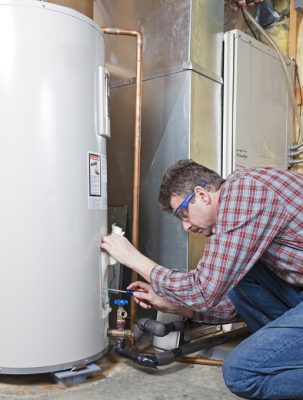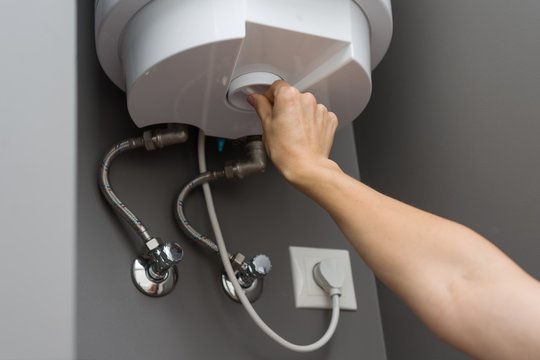Have you been interested in additional info around Tips on Maintaining a Water Heater?

Hot water is important for daily comfort, whether it's for a rejuvenating shower or washing dishes. To guarantee your hot water system runs efficiently and lasts much longer, regular upkeep is essential. This write-up offers sensible ideas and insights on exactly how to keep your home's hot water system to stay clear of disruptions and expensive repair work.
Intro
Maintaining your home's warm water system could appear complicated, however with a few easy actions, you can guarantee it operates efficiently for many years to come. This guide covers whatever from comprehending your warm water system to DIY maintenance pointers and knowing when to contact specialist assistance.
Value of Keeping Your Hot Water System
Routine upkeep not just expands the lifespan of your warm water system yet also ensures it operates effectively. Disregarding maintenance can cause lowered performance, higher energy expenses, and even early failing of the system.
Signs Your Hot Water System Requirements Maintenance
Understanding when your warm water system requires focus can protect against major concerns. Keep an eye out for indicators such as irregular water temperature level, strange noises from the heater, or rustic water.
Understanding Your Hot Water System
Before diving right into maintenance tasks, it's useful to recognize the standard parts of your warm water system. Normally, this consists of the hot water heater itself, pipes, anode rods, and temperature level controls.
Month-to-month Upkeep Tasks
Routine regular monthly checks can help catch small concerns before they escalate.
Purging the Hot Water Heater
Purging your water heater removes debris accumulation, enhancing performance and lengthening its life.
Monitoring and Replacing Anode Rods
Anode rods prevent deterioration inside the container. Inspecting and replacing them when broken is crucial.
Evaluating and Readjusting Temperature Setups
Readjusting the temperature settings makes certain ideal performance and safety.
DIY Tips for Maintenance
You can carry out numerous maintenance jobs on your own to maintain your warm water system in leading condition.
Checking for Leaks
On a regular basis evaluate pipelines and connections for leakages, as these can lead to water damage and higher costs.
Evaluating Stress Alleviation Valves
Checking the stress safety valve guarantees it works correctly and avoids excessive stress build-up.
Insulating Pipes
Insulating hot water pipelines reduces warmth loss and can conserve power.
When to Call a Professional
While do it yourself maintenance is valuable, some issues need specialist proficiency.
Complex Problems Calling For Professional Help
Examples include significant leakages, electrical issues, or if your water heater is consistently underperforming.
Regular Professional Upkeep Benefits
Expert upkeep can include thorough examinations, tune-ups, and guaranteeing conformity with safety requirements.
Conclusion
Routine upkeep of your home's hot water system is crucial for efficiency, durability, and price savings. By complying with these pointers and knowing when to seek expert aid, you can ensure a trustworthy supply of warm water without unexpected interruptions.
How to Maintain an Instant Hot Water Heater
Before tinkering with your hot water heater, make sure that it’s not powered on. You also have to turn off the main circuit breaker and shut off the main gas line to prevent accidents. Also turn off the water valves connected to your unit to prevent water from flowing into and out of the appliance. 2. When you’re done, you have to detach the purge valves’ caps. These look like the letter “T” and are situated on either side of the water valves. Doing so will release any pressure that has accumulated inside the valves while at the same time avoid hot water from shooting out and burning your skin. 3. When the purge valves’ caps are removed, you have to connect your hosing lines to the valves. Your unit should have come with three hoses but if it didn’t, you can purchase these things from any hardware or home repair shops. You can also get them from retail stores that sell water heating systems. Read the user’s manual and follow it to complete this task properly. When the hosing lines are connected, open the purge port’s valves. 4. You should never use harsh chemical cleaners or solutions when cleaning your unit. Make use of white vinegar instead. It should be undiluted and you’ll probably use about 2 gallons. 5. Now flush your water heater. This task should probably take about 40 minutes. We can’t give you specific directions for this because the procedure is carried out depending on the type, model and brand of your heater. With that being said, refer to the user’s manual. 6. When you’re done draining the unit, you have to turn off the purge port valves again. Remove the hosing lines that you earlier installed on each of the water valves. Put the valve caps (purge port) back in their respective places and be very careful so as not to damage the rubber discs that are found inside these caps. 7. Now that everything’s back in place, check your user’s manual again to find out how to reactivate your water heating system. 8. Once it is working, turn one of your hot water faucets on just to let air pass through the heater’s water supply pipes. Leave the tap on until water flows smoothly out of it. https://www.orrplumbing.com/blog/2014/september/how-to-maintain-an-instant-hot-water-heater/

Do you appreciate more info about Tips For Maintaining Your Hot Water Heater? Create a remark down below. We'd be pleased to listen to your suggestions about this blog. We hope to see you back again in the near future. Remember to take the opportunity to share this post if you liked it. We truly appreciate your readership.
Call